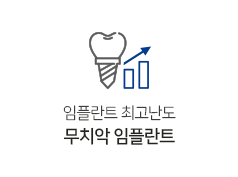Shading is a fundamental concept in art and design that involves addin…
페이지 정보
작성자 Chad 댓글 0건 조회 6회 작성일 24-10-26 05:47본문
1. Hatching and Cross-Hatching: Hatching involves creating a series of parallel lines to build up value and texture in a drawing. Cross-hatching takes this technique a step further by adding more sets of lines that intersect each other, creating darker areas where the lines overlap.
2. Blending: Blending involves smoothly transitioning between different tones or colors to create a soft, realistic gradient. This can be achieved using blending tools like blending stumps, tortillons, or even your fingertips.
Having oily skin can sometimes make it challenging to achieve a flawless makeup look that lasts all day. Excess oil production can cause makeup to smudge, fade, or even melt off, but with the right techniques and products, you can keep your makeup looking fresh and flawless throughout the day. Here are some tips on how to achieve flawless makeup for oily skin:
3. Opt for Oil-Free and Long-Wearing Foundations:
When choosing a foundation for oily skin, opt for oil-free and long-wearing formulas. Liquid foundations with a matte finish or powder foundations work well for oily skin types. Use a beauty sponge or a brush to blend the foundation seamlessly into your skin for a natural-looking finish.
By following these tips and using the right products, you can achieve a flawless makeup look that lasts all day, even if you have oily skin. Remember that skincare is essential for managing oil production, so incorporating a proper skincare routine tailored to oily skin can also help improve the overall appearance of your makeup. Don't let oily skin stop you from rocking your favorite makeup looks with confidence!
5. Use Oil-Absorbing Sheets:
Throughout the day, oil-absorbing sheets can be your best friend to keep excess oil at bay without disrupting your makeup. Gently blot the sheets on areas that appear shiny to mattify your skin and freshen up your makeup look.
5. Request Letters of Recommendation:
Letters of recommendation provide insight into your character, academic abilities, and potential for success in college. Choose teachers, counselors, or other mentors who know you well and can speak to your strengths. Request recommendation letters early to give your recommenders ample time to write them before the deadline.
Physical exfoliation involves using a scrub or tool to manually slough off dead skin cells. These products typically contain abrasive particles such as sugar, salt, or ground walnut shells. While physical exfoliation can be effective, it is important to use gentle pressure to avoid irritating the skin. Over-exfoliation can lead to redness, sensitivity, and even damage to the skin barrier.
*Overview:*
Powder foundations are known for their ease of application and natural matte finish. They are a great option for those with oily skin or anyone looking for a quick and effortless makeup routine.
2. Understand the Application Requirements:
Each college or university will have its own set of application requirements, which may include standardized test scores (SAT or ACT), high school transcripts, Low manipulation hair styling letters of recommendation, personal essays, and extracurricular activity lists. Familiarize yourself with the specific requirements of each school on your list to ensure you are prepared to submit a complete application.
7. Touch Up as Needed:
Carry a compact powder and blotting sheets in your purse for quick touch-ups throughout the day. Lightly powder your T-zone and use blotting sheets to remove excess oil without disturbing your makeup.
7. Submit Your Applications:
After completing all components of your applications, review them thoroughly for accuracy and completeness. Submit your applications before the deadlines to avoid any last-minute technical issues or delays. Keep track of confirmations and follow up with schools to ensure they have received your materials.
*Coverage and Finish:*
Liquid foundations offer medium to full coverage, depending on the formula and application technique used. They provide a natural, skin-like finish that can be easily blended for a seamless look.
The history of lipstick dates back to ancient civilizations such as the Mesopotamians, Egyptians, and Greeks, who used various natural substances to color their lips. Over time, lipstick has evolved from simple mixtures of pigments and oils to sophisticated formulas with long-lasting staying power and added benefits such as hydration and sun protection.
When choosing a lipstick, it is essential to consider factors such as skin tone, texture preferences, and desired finish. Different formulations, such as matte, satin, gloss, and sheer, offer varying levels of pigment intensity, shine, and longevity. Matte lipsticks provide a velvety finish and high color payoff but can be drying on the lips, while glosses offer a shiny, hydrating effect but may require more frequent reapplication.
It is important to choose an exfoliation method that is suitable for your skin type and concerns. Those with sensitive skin should opt for gentler exfoliants and limit exfoliation to once or twice a week, while those with oily or acne-prone skin may benefit from more frequent exfoliation. It is also crucial to follow up exfoliation with proper hydration and sun protection, as exfoliation can leave the skin more vulnerable to damage from UV rays.
2. Blending: Blending involves smoothly transitioning between different tones or colors to create a soft, realistic gradient. This can be achieved using blending tools like blending stumps, tortillons, or even your fingertips.
Having oily skin can sometimes make it challenging to achieve a flawless makeup look that lasts all day. Excess oil production can cause makeup to smudge, fade, or even melt off, but with the right techniques and products, you can keep your makeup looking fresh and flawless throughout the day. Here are some tips on how to achieve flawless makeup for oily skin:
3. Opt for Oil-Free and Long-Wearing Foundations:
When choosing a foundation for oily skin, opt for oil-free and long-wearing formulas. Liquid foundations with a matte finish or powder foundations work well for oily skin types. Use a beauty sponge or a brush to blend the foundation seamlessly into your skin for a natural-looking finish.
By following these tips and using the right products, you can achieve a flawless makeup look that lasts all day, even if you have oily skin. Remember that skincare is essential for managing oil production, so incorporating a proper skincare routine tailored to oily skin can also help improve the overall appearance of your makeup. Don't let oily skin stop you from rocking your favorite makeup looks with confidence!
5. Use Oil-Absorbing Sheets:
Throughout the day, oil-absorbing sheets can be your best friend to keep excess oil at bay without disrupting your makeup. Gently blot the sheets on areas that appear shiny to mattify your skin and freshen up your makeup look.
5. Request Letters of Recommendation:
Letters of recommendation provide insight into your character, academic abilities, and potential for success in college. Choose teachers, counselors, or other mentors who know you well and can speak to your strengths. Request recommendation letters early to give your recommenders ample time to write them before the deadline.
Physical exfoliation involves using a scrub or tool to manually slough off dead skin cells. These products typically contain abrasive particles such as sugar, salt, or ground walnut shells. While physical exfoliation can be effective, it is important to use gentle pressure to avoid irritating the skin. Over-exfoliation can lead to redness, sensitivity, and even damage to the skin barrier.
*Overview:*
Powder foundations are known for their ease of application and natural matte finish. They are a great option for those with oily skin or anyone looking for a quick and effortless makeup routine.
2. Understand the Application Requirements:
Each college or university will have its own set of application requirements, which may include standardized test scores (SAT or ACT), high school transcripts, Low manipulation hair styling letters of recommendation, personal essays, and extracurricular activity lists. Familiarize yourself with the specific requirements of each school on your list to ensure you are prepared to submit a complete application.
7. Touch Up as Needed:
Carry a compact powder and blotting sheets in your purse for quick touch-ups throughout the day. Lightly powder your T-zone and use blotting sheets to remove excess oil without disturbing your makeup.
7. Submit Your Applications:
After completing all components of your applications, review them thoroughly for accuracy and completeness. Submit your applications before the deadlines to avoid any last-minute technical issues or delays. Keep track of confirmations and follow up with schools to ensure they have received your materials.
*Coverage and Finish:*
Liquid foundations offer medium to full coverage, depending on the formula and application technique used. They provide a natural, skin-like finish that can be easily blended for a seamless look.
The history of lipstick dates back to ancient civilizations such as the Mesopotamians, Egyptians, and Greeks, who used various natural substances to color their lips. Over time, lipstick has evolved from simple mixtures of pigments and oils to sophisticated formulas with long-lasting staying power and added benefits such as hydration and sun protection.
When choosing a lipstick, it is essential to consider factors such as skin tone, texture preferences, and desired finish. Different formulations, such as matte, satin, gloss, and sheer, offer varying levels of pigment intensity, shine, and longevity. Matte lipsticks provide a velvety finish and high color payoff but can be drying on the lips, while glosses offer a shiny, hydrating effect but may require more frequent reapplication.
It is important to choose an exfoliation method that is suitable for your skin type and concerns. Those with sensitive skin should opt for gentler exfoliants and limit exfoliation to once or twice a week, while those with oily or acne-prone skin may benefit from more frequent exfoliation. It is also crucial to follow up exfoliation with proper hydration and sun protection, as exfoliation can leave the skin more vulnerable to damage from UV rays.
댓글목록
등록된 댓글이 없습니다.























































